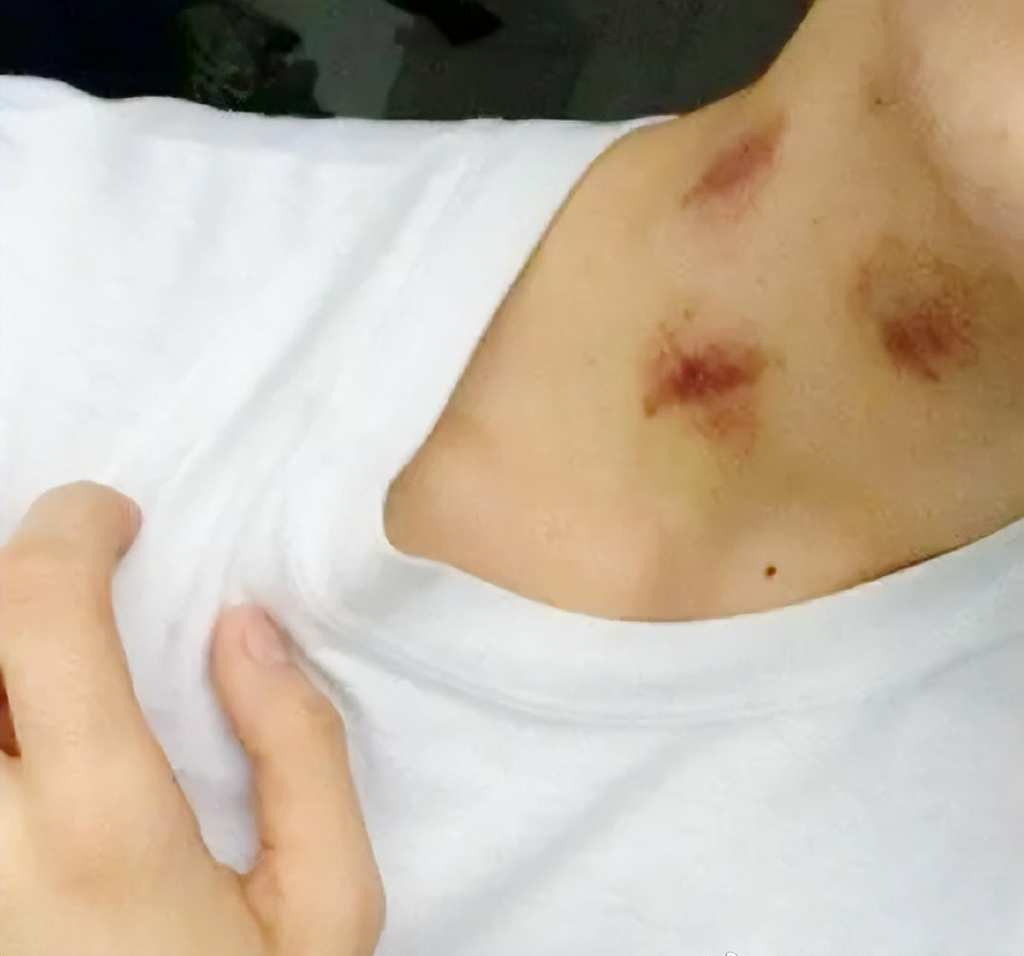
Intimacy at any age can leave its traces—a sense of warmth, a feeling of connection, a shared smile. But sometimes, it leaves a more visible mark. The appearance of a bruise or a red patch on the neck can quickly be dismissed or joked about as a “love bite” or a hickey, a relic of passionate youthful encounters.
But in midlife and beyond, when such marks appear without that context, or seem different, it’s crucial to look closer. The body doesn’t always communicate in whispers. These marks on the neck aren’t love bites, they’re signs of… an underlying health issue that demands your attention.
Before you let embarrassment or assumption stop you from investigating, let’s explore what these marks might truly signify. Your skin, especially on the neck, is a sensitive canvas, and changes in its appearance are often important memos from your internal systems.
The Most Common Culprit: A Canary in the Blood Sugar Coal Mine
One of the most significant, and often missed, explanations for dark, velvety patches on the neck is a condition called Acanthosis Nigricans.
- What it looks like: This isn’t a bruise. It presents as a dark, brownish-grey or black, velvety thickening of the skin, most commonly in the folds of the neck, the armpits, and the groin. It can look like a patch of dirt that won’t wash off.
- What it’s a sign of: Acanthosis Nigricans is strongly linked to insulin resistance, which is a precursor to Type 2 Diabetes. When the body becomes resistant to insulin, the excess insulin in the bloodstream can stimulate the rapid growth of skin cells, leading to these characteristic dark, thickened patches. For many, this skin change is the first visible warning sign of a developing metabolic problem.
Other Medical Causes Worth Investigating
Beyond insulin resistance, other internal conditions can manifest as marks on the neck.
- Petechiae: These are tiny, pinpoint, red or purple spots that occur when tiny blood vessels (capillaries) bleed under the skin. They don’t blanch (turn white) when you press on them. While they can be caused by strenuous coughing or vomiting, they can also be a sign of low platelet counts, blood clotting disorders, or even serious infections.
- Sun Damage and “Age Spots”: Years of sun exposure can lead to solar lentigines—flat, brown, or black spots that are often mistaken for other things. While usually benign, any changing spot should be monitored.
- Allergic Reactions or Eczema: Contact with a new perfume, laundry detergent, or jewelry can cause a red, itchy, inflamed patch that might be mistaken for something else.
The Possibility of Actual Bruising
Of course, a mark could be a simple bruise (ecchymosis). But if you find yourself bruising easily on the neck and elsewhere with minimal trauma, it could point to:
- Medication Side Effects: Blood thinners (like aspirin, warfarin, or Plavix) make you more prone to bruising.
- Nutritional Deficiencies: A lack of Vitamin C or Vitamin K can weaken blood vessels and impair clotting.
- Underlying Liver or Kidney Disease: These organs are crucial for producing clotting factors and filtering toxins. When they aren’t functioning properly, bruising can be a symptom.
Your Action Plan: From Mark to Diagnosis
Finding an unexplained mark on your neck should prompt a methodical, not a panicked, response.
- Don’t Ignore It or Be Embarrassed. Your health is more important than a moment of awkwardness.
- See Your Primary Care Physician or a Dermatologist. This is the most important step. Describe the mark clearly: When did it appear? Has it changed? Is it itchy or painful?
- Be Prepared for Simple Tests. Your doctor will likely look at the mark and may order blood tests. For suspected Acanthosis Nigricans, a fasting blood glucose or A1C test will check for diabetes and prediabetes. For easy bruising, a Complete Blood Count (CBC) can check your platelet levels.
- Look for Patterns. Are there similar marks in other skin folds? Are you experiencing other symptoms like increased thirst, fatigue, or unexplained weight changes? This information is gold for your doctor.
A mark on the neck is a signal, not a verdict. While it can be a harmless bruise or irritation, it can also be your body’s way of waving a red flag for a silent condition like insulin resistance. By choosing to see this mark not as a secret to hide, but as a clue to investigate, you move from a position of worry to one of empowerment. You are taking a proactive step to safeguard your long-term health, ensuring that a small mark on your skin doesn’t become a sign of a larger, unaddressed issue.